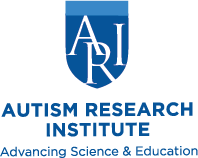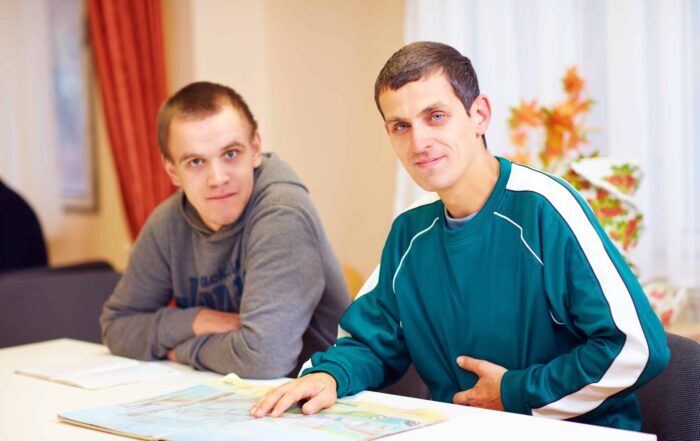Valerie Paradiz, Ph.D., Chloe Rothschild, and Jeremy Sicile-Kira co-present on the importance of developing sensory and social self-advocacy abilities. Using the Integrated Self-Advocacy (ISA) Curriculum, they detail personal experiences in developing self-advocacy abilities. They speak about the importance of community and support and provide real-world examples of self-advocacy at home, work, and school. This panel was part of the Fall 2012 Autism Research Institute Conference.
In this webinar:
1:50 – Integrated self-advocacy curriculum development
3:00 – Background with autism and tornado stemming
6:55 – Misnomers of self-advocacy
8:25 – Three steps of the self-advocacy action plan
10:30 – Example – Disclosure
12:00 – Example – Air fresheners in classrooms
13:00 – Disclosure
15:40 – ISA curriculum
17:10 – Case study – Hearing device
18:40 – Sensory scan examples
22:35 – Case study – Chloe Rothschild presents
29:30 – Case study – Jeremy Sicile-Kira presents
37:55 – ISA social scan
41:00 – Example – Building social skills
43:30 – Bullying and harassment series
Paradiz introduces the panel and discusses their workshops that focus on supporting peer-to-peer support processes for individuals with autism. She outlines the development of the integrated self-advocacy curriculum (ISA) and how it can enhance sensory and social self-advocacy skills (1:50). She emphasizes the importance of learning to advocate for sensory and social differences and needs for accommodation (3:00). Paradiz chronicles her story of late diagnosis (3:00) and her realization of self-advocacy (6:40) before diving into the steps of the ISA curriculum. There are three basic steps for enhancing self-awareness and advocacy (8:25):
1. Become aware of a specific problem or issue
ISA curriculum uses sensory and social scans to help individuals identify specific problems they may be experiencing in certain environments (15:40). Paradiz provides examples of sensory scan self-assessments (17:10) in the form of questionnaires, picture books, flip books, and more (20:35). Such sensory scans help to methodically check an individual’s experiences in each sensory system to identify their top three environmental needs (18:40).
2. Develop an advocacy plan and decide what/how much to disclose
Once individuals are aware of their top three sensory needs, they can decide what to do to address their needs and how much information they will need to disclose. Paradiz notes the importance of understanding how and what to disclose in a given situation (10:30) and provides examples of full and partial disclosure (13:00).
3. Implement the plan
Paradiz notes that ineffective self-advocacy is often referred to and understood as behavior. She details classroom examples of successful implementation (12:00) and emphasizes that some applications will include support staff or communication partners.
After the ISA introduction, Chloe Rothschild, a young adult with autism and self-advocate youth leader, recounts a personal experience with an ISA sensory scan implementation (22:35). She discusses a volunteer experience at a food bank and how it left her feeling exhausted and often caused migraines. Chloe outlines how she used the ISA sensory (24:00) scan and provides her results for each sensory system (25:05):
Specific problem:
-Constantly exhausted and painful migraines
Top three environmental needs:
-Auditory – background noise
-Vestibular/proprioceptive – difficulty sitting still for long periods
-Visual – difficulty processing information when space is cluttered and full
Sensory plan:
-Schedule time for daily sensory activities
-Wear a deep pressure vest, ride an exercise bike, and take a quiet break before the food bank
-Take a short break at the food bank to do sensory activities when needed
Disclosure (Advocacy script):
-Ask for a break when needed by saying, “I really need a break. I am feeling overwhelmed.”
Support was provided to Chloe by her teacher and occupational therapist. Following these steps and practices, she could cope with her time at the food bank even though it was not her favorite activity (28:50).
Jeremy Sicile-Kira also discusses his experience with ISA sensory scans and plans at his local Starbucks. Using an alternative augmentative communication (AAC) device, Jeremy lists his sensory scan results (30:30) and describes his top three sensory difficulties as auditory, visual, and olfactory (35:24). He notes his need for support from his communication partner (37:20). Jeremy details his action plans, including placing break cards on the table for accessible communication, setting a time limit for staying, and sitting near an exit (36:30).
Following these two panel presentations, Paradiz outlines ISA social scans, noting that we are not all alike in social features and needs. She underscores the importance of accepting, understanding, and advocating for autistic individuals instead of attempting to mold their social preferences to non-autistic expectations (39:35). She details Jeremy’s learned ability to self-advocate for one-on-one socialization instead of leaving a room due to overstimulation (41:00). Paradiz provides examples of ISA social scans, including a series on harassment and bullying (43:30).
Published: 12/07/2012

From Special to H.A.P.P.Y.
Peter Vermeulen, Ph.D., considers a positive approach to psychoeducation for autistic individuals. He draws on over 25 years of experience to illustrate contemporary changes in autism intervention focus and discourse. The speaker
Examining the Transition to Adulthood in Autism: Challenges and Opportunities in the Aim of Thriving
David B. Nicholas, Ph.D., examines the transition to adulthood and its implications for autistic individuals. He presents the ecosystem mentality and discusses recent findings supporting a holistic and future-oriented
Transitions from Pediatric to Adult Medical Care
Julie Corder, CNP, and Carrie Cuomo, DNP, CPNP, with the Cleveland Clinic Learning Hospital, discuss the critical stages of transition from pediatric to adult healthcare for individuals with complex medical needs. They
Back-to-School Resources
Whether you’re a parent preparing a child for grade school or an adult transitioning into or out of college, the back-to-school season can present unique challenges for families and individuals with autism.
LGBTQIA+ and Autism
Contemporary research on the intersection of autism, sexuality, and gender identity asserts that autistic individuals are more likely to identify as LGBTQIA+ than the neurotypical population. Similarly, the prevalence of autism is
Transportation issues rarely addressed by providers
Very few medical or behavioral specialists discuss driving or other transportation-related issues with patients who have ASD (autism spectrum disorders), according to a new study. Emma Sartin and colleagues surveyed 78 providers,







